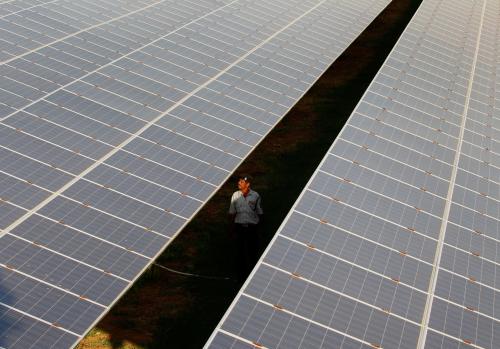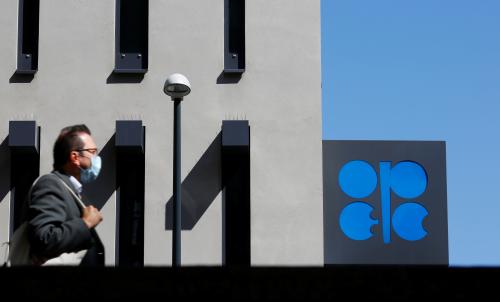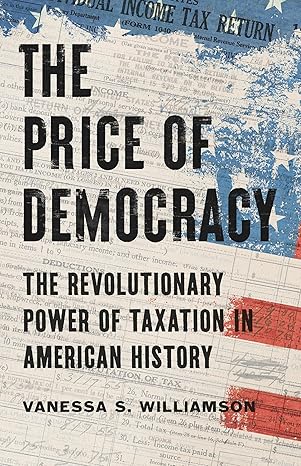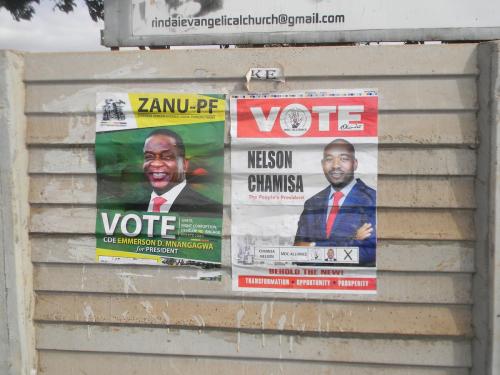Content from the Brookings Institution India Center is now archived. After seven years of an impactful partnership, as of September 11, 2020, Brookings India is now the Centre for Social and Economic Progress, an independent public policy institution based in India.
Watch Vikram S Mehta on Macros with Mythili on ET Now.
There’s been a dramatic collapse in the price of crude oil in recent weeks. Price of the Indian basket has more than halved since the Modi government took over in May 2014 – from 108 USD a barrel to just below 30 USD a barrel. With talks of oil prices falling to 20 or 10 USD a barrel, we seem to be entering a new phase of geopolitics of energy and possibly of global warming. What are the underlying reasons for this sharp decline in prices of oil?
The reason why prices come down is more to do with supply than demand. China accounts for only 1/10 of crude demand, Europe and USA together still account for 40% of demand. When we talk about the decline in the demand for oil from China, we should keep in mind that it is not the main driver behind the fall in price. The main driver is: almost two years ago it was a decision by Saudi Arabia to shift the role of marginal supplier to the US. They just turned on the taps and decided to defend market share. They’ve been pumping over 10 million barrels a day. Supply from Iraq, Libya exceeded all expectations and there’s also Iran which is looking to increase export by 500,000 barrels a day in three months and a million barrels a day over 12 months. Whether they succeed or not is another matter, but the market is certainly factoring this new addition of supply into the equation.
This situation is to do with oversupply than to do with demand. Is it structural? Yes, in some ways. On the demand side, OECD demand peeked in 2005, since then in absolute terms OECD demand has fallen by 10% since 2005, and is trending downwards.
China and India will continue to be the main drivers of demand for transportation fuel but when you compare their demand to the past you’ll have to recognise that demand as such is on a secular downturn at a global level – not necessarily in India and China. If the five Gulf countries – Saudi Arabia, Oman, UAE, Kuwait and Qatar – continue to act in unison, and if Iraq and Iran are in the market again then we’re going to have increased production capacity plus there’s a huge amount of inventory both on land and afloat in supertankers.
There’s a structural shift. This does not mean that prices will continue to fall, in fact, they will probably start to rise again by the third or fourth quarter of this year, but I suspect that when the rise happens it will be a modest rise.
What do such low prices mean for exploration and production spend by major oil companies. Most oil majors have already cut their capital spending. Will oil prices shoot up as a consequence?
Prices will probably fall a little bit further before they start to rise again and then maybe the third quarter or so they’ll be ranging between 40 and 50 USD per barrel. I don’t expect the price of oil over the year to average more than 50 USD a barrel. The reason for that is threefold: there is an overhang of supply and that’s not going anywhere in the near future. Second, the price will start to rise because a lot of production, especially in the US – light oil or the shale oil producers – are now running a cash loss business and they’re going to have to shut down. The reason they haven’t shut down so far is that there’s a lag between the fall in the price of oil and the movement of drilling rigs away from the field and my rough estimate is that that lag is about eight months. We’re coming to the period where a large number of drilling rigs in the US are either closing down or are moving away from oil fields.
The third factor that’s going to push prices up is that the banks are heavily exposed to energy companies and so on one hand you’ll have energy companies closing down, on the other you’ll have banks also shutting off their credit supply.
Then you’ve got the whole issue of geopolitics: the Middle East is a volatile area and one must not underestimate the possibility of the unexpected choking off of supply somewhat and thereby pushing up prices. If one were to just focus on demand and supply, we would see an upturn in the price of oil but there will be some volatility, but I suspect that the average will be no more than 50 USD or so a barrel over the next 12 months.
What does the return of Iran to the international oil market mean, globally and also in the Indian context. Is it true that India has been buying from Iran despite the US sanctions. Now that Iran is back, what different will it make for us? Will the decades oil discussion of an Iran-Pakistan-India pipeline be revived?
Iran and India have a long standing relationship and even at the height of the sanctions India was doing some business with Iran but it was quiet, under the radar and, in fact there was no exchange of money, it was all most on credit terms. The withdrawal of sanctions does offer India a huge opportunity to help revive the Iranian oil industry.
Iran would need a 100 billion dollars to get their oil industry back on track. It is not at all clear to me that the western banks are going to be ready to invest in Iran just yet. There’s still a lot of uncertainty about Iranian politics and Iranian commitment to the whole sanction issue. India could play a role here. India could enter the Iranian market, it could forge a long-term supply deal and it could invest in their upstream fields, use their technological expertise to help revive the Iranian industry. I see this as an opportunity, and hope this is something the Government of India and the Ministry of Petroleum would look at pretty thoroughly and aggressively.
So far as the gas pipeline issue is concerned, this is a project that makes economic sense and we all know that it makes economic sense, although the economics of a trans-continental or trans-national pipeline has, to some extent, been eroded because of the price of gas. But the reality is that there is Pakistan and the security concerns cannot be wished away. So there’s a much stronger likelihood of a much stronger Iran-Pakistan pipeline moving ahead, and then eventually possibly a Pakistan-India connection than an Iran-Pakistan-India pipeline being agreed to all at once. I’m not at all optimistic about the pipeline coming into fruition in the near to medium term but I would certainly recommend that that conversation about that project continue to be held.
What is the impact of low oil prices on the push towards renewables? It’s not as much the environment as the high and volatile oil prices which was mainly the push towards renewables. Will environmental concerns take a backseat because it’s going to be so much harder to make people give up their dependence on fossil fuel when it’s become so cheap?
If you were to just look at the economics it becomes a little bit more difficult for one to invest in solar and wind. Having said that, COP21 was a clear commitment by the entire global community to shift away from fossil fuel. This is a real commitment. It might take a long time to convert to tangible impact, but there’s a commitment and recognition that something has to be done to contain carbon emissions; something has to be done to push the economy of the country as a whole to a low carbon trajectory. Against that backdrop and against the backdrop of sharply reducing oil prices, in renewables, particularly with regard to solar, we’re going to see a disconnect between the price of oil and the investment interest of solar and, to a lesser extent, wind.
Recently one of the solar companies offered INR 4.13 kw of bid to Rajasthan government. That makes it almost competitive to gas at the grid. Solar is appearing to reach grid parity with gas. It’s already reached grid parity with oil and makes much more economic sense in so far as electricity is concerned. The real issue is not whether we convert residential homes or industry or electric power from fossil fuels to solar and wind, but can we find an alternative to diesel and gasoline for transportation.
60% of the demand for liquid fuel is from the transportation sector. Unless and until we find an alternative to liquid fuel for transportation, oil will remain the key energy component to the energy basket. In that sense, everything hinges on electric vehicles and battery storage. That’s the technological change that we need to focus on.
Like other products of the Brookings Institution India Center, this article is intended to contribute to discussion and stimulate debate on important issues. The views are those of the author.
The Brookings Institution is committed to quality, independence, and impact.
We are supported by a diverse array of funders. In line with our values and policies, each Brookings publication represents the sole views of its author(s).










Commentary
Op-ed‘Withdrawal of sanctions on Iran a huge opportunity for India to revive the Iranian oil industry’
ET Now
February 5, 2016